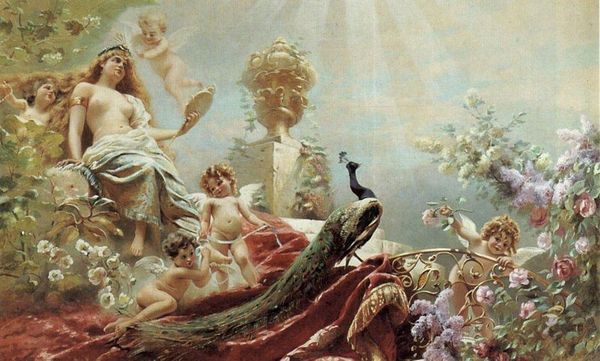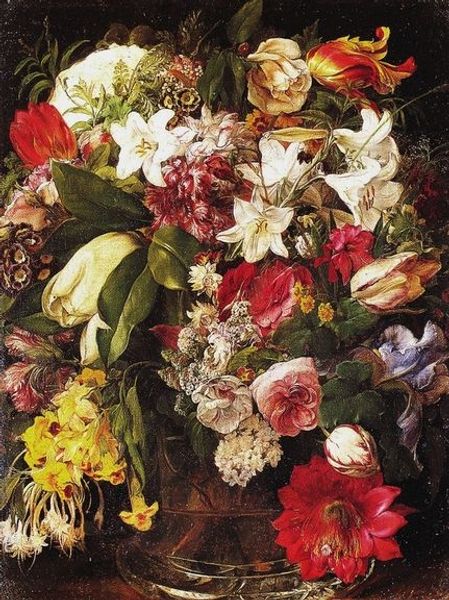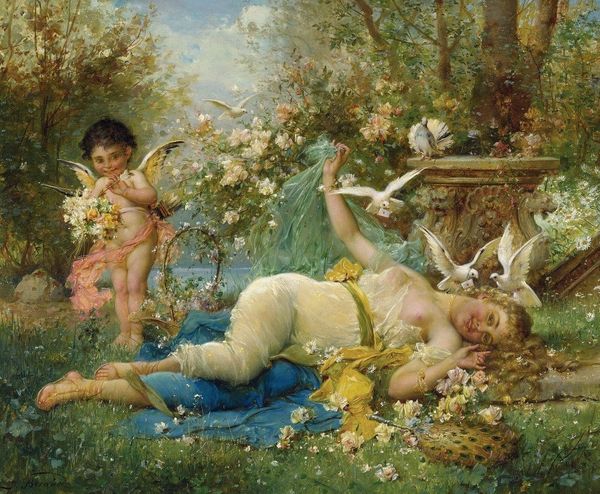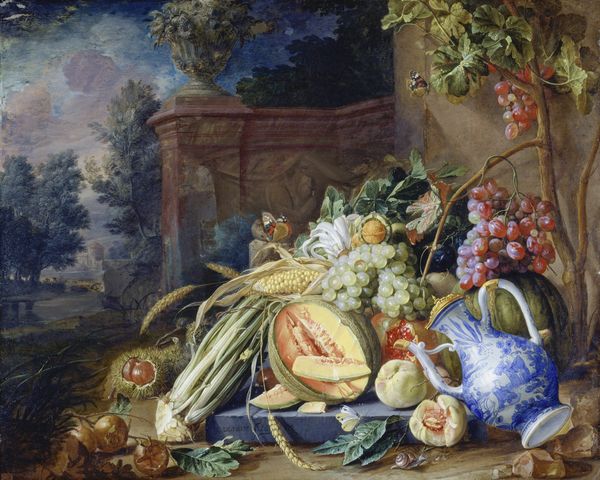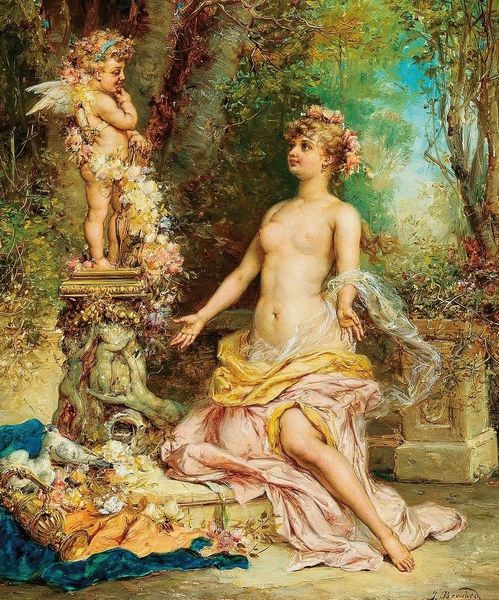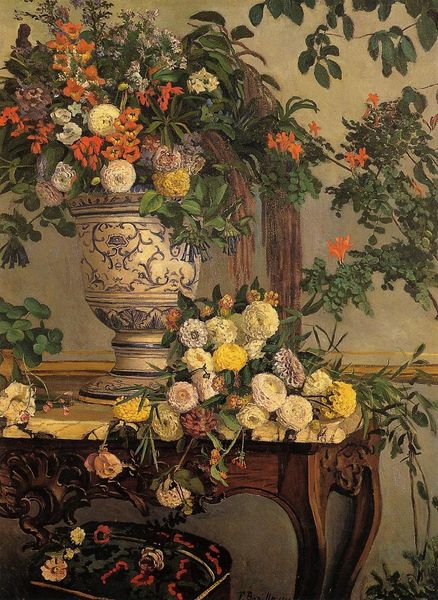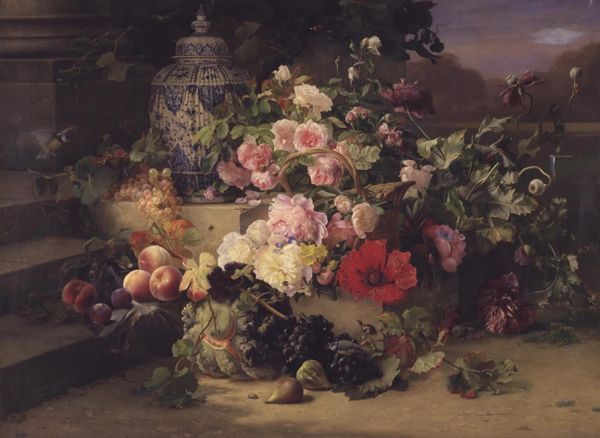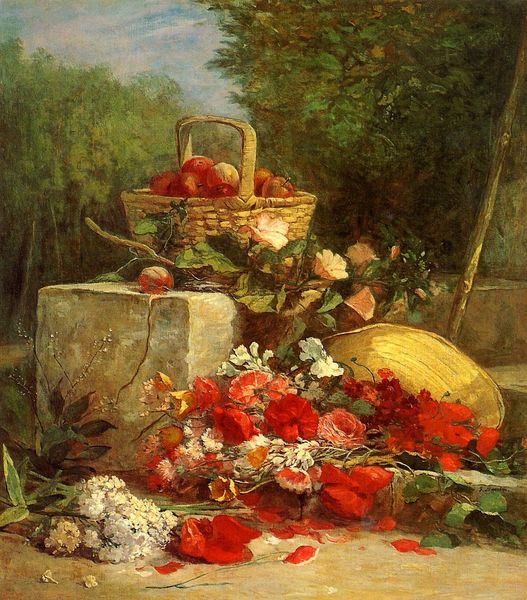
painting, oil-paint, photography
#
still-life
#
gouache
#
painting
#
oil-paint
#
landscape
#
figuration
#
photography
#
romanticism
Copyright: Public domain
Eugene Bidau painted this *Elegant Still Life with Flowers* in France, sometime in the late 19th century. This was a time when the bourgeois class was gaining prominence, and their refined tastes shaped the artistic and cultural landscape. Still life paintings like this were a celebration of beauty and abundance. But beyond their aesthetic appeal, they spoke to the values of the rising middle class, reflecting their aspirations, wealth, and cultivated appreciation for the finer things in life. Consider how Bidau meticulously arranges the flowers and objects, composing a scene that pleases the eye, but also evokes a sense of harmony, and control. The attention to detail in rendering each petal, leaf, and vase is representative of the values held by the powerful institutions and cultures of that time. To understand the context of such a painting, we need to consult sources that illuminate the tastes, values, and social structures of the period. The role of the art historian is to examine the power dynamics at play and to interpret the imagery.
Comments
No comments
Be the first to comment and join the conversation on the ultimate creative platform.
